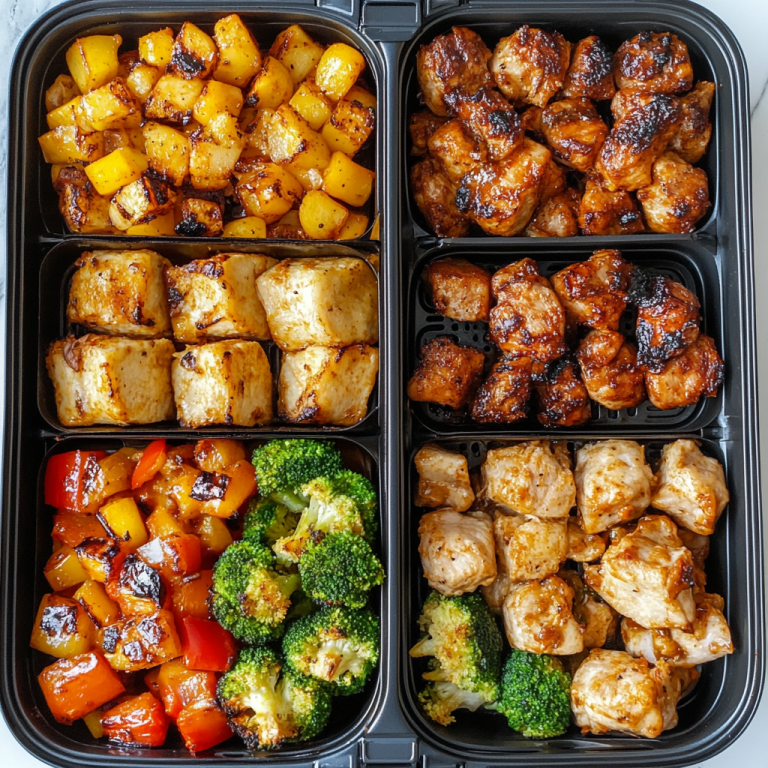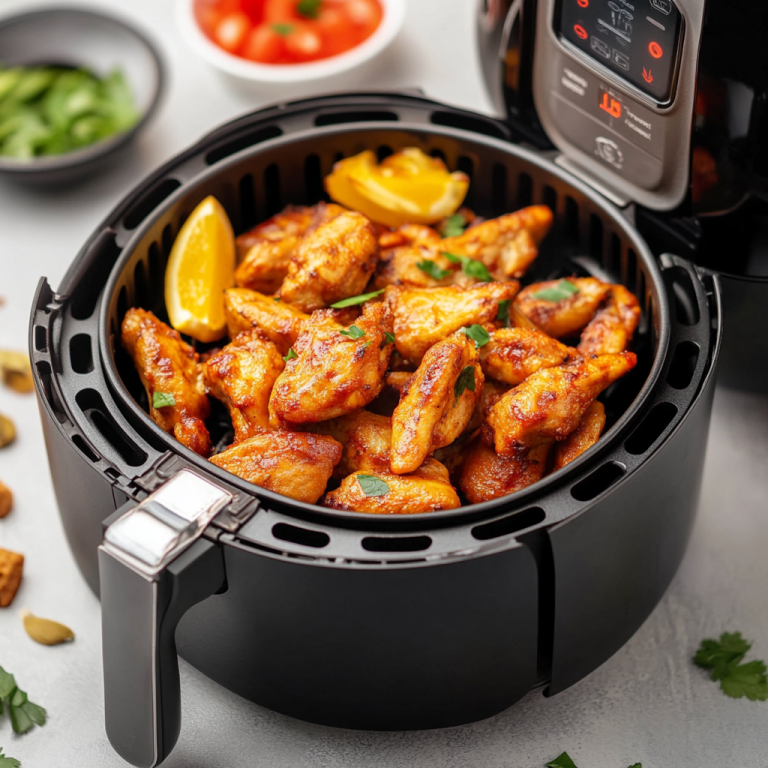Reheating Times Air Fryer: Quick Guide For Leftovers
If one is seeking a quick and healthier method to reheat meals, an air fryer may prove to be an invaluable addition to the kitchen. This versatile kitchen appliance not only achieves a perfect crispness for leftovers but also optimizes time efficiency in the reheating process. This discussion will explore the benefits of utilizing an air fryer for reheating, factors that influence reheating times, and recommended durations for various types of food. Additionally, practical tips will be provided to ensure that meals consistently retain their fresh taste. Prepare to enhance your reheating capabilities.
What is an Air Fryer?
An air fryer is a versatile kitchen appliance that employs convection heating technology to rapidly circulate hot air around food, achieving a crispy texture comparable to traditional frying while significantly reducing the need for excess oil. This compact device provides users with an efficient method for preparing a wide range of meals, from crispy fries to moist reheated chicken, establishing itself as an essential tool in contemporary kitchens. With programmable settings and an easy-to-clean frying basket, it enhances the cooking experience while minimizing waste and preserving food quality. The air fryer excels in streamlining meal preparation for busy families, facilitating quick cooking methods that conserve both time and energy. By evenly distributing heat, it ensures that each dish cooks uniformly, thereby enhancing flavors and textures in a manner that traditional cooking methods often cannot replicate. As a healthier alternative, it substantially reduces cooking fat, catering to individuals seeking nutritious options without compromising on taste. Additionally, its capacity for batch cooking makes it an excellent choice for family dinners or meal planning, allowing everyone to enjoy their favorite dishes without sacrificing health considerations.
Benefits of Reheating with an Air Fryer
Reheating leftovers using an air fryer presents several advantages, including improved flavor retention, optimal food temperature maintenance, and a crispy finish that traditional microwaves often struggle to provide. This multifunctional appliance not only saves time but also encourages healthy reheating methods, positioning it as an energy-efficient alternative for individuals seeking to enhance their meal preparation and minimize food waste. With its rapid cooking capabilities and superior heat distribution, one can enjoy quick meals that retain the taste and quality of freshly made dishes.
Healthier Option and Time-Saving
Reheating food in an air fryer presents a healthier alternative to traditional methods, as it requires minimal to no oil while effectively preserving both the quality and flavor of the food. This time-efficient cooking technique enables individuals to enjoy quick meals without remorse, making it an ideal option for health-conscious consumers and busy families alike. Unlike microwaving, which can result in soggy textures and uneven heating, air frying utilizes the circulation of hot air around the food, ensuring a crispy exterior and uniformly warmed interior. This method not only significantly reduces fat content but also retains essential nutrients that may be diminished during other reheating processes. Grilling, broiling, or roasting typically demands more time and often requires constant monitoring; in contrast, air frying streamlines these techniques into a straightforward and efficient approach that integrates seamlessly into a fast-paced lifestyle. Consequently, individuals can savor delicious leftovers or frozen meals in a fraction of the usual time, all while promoting their overall health.
Factors Affecting Reheating Time
Understanding the factors that influence reheating times is crucial for achieving optimal results when utilizing an air fryer. Variables such as food type, quantity, and cooking duration can significantly impact the efficiency and uniformity of the heating process. By mastering temperature control and portion management through appropriate power settings, users can enhance cooking efficiency and ensure consistent warmth and quality of the food.
Food Type and Quantity
The type and quantity of food being reheated are critical factors in determining appropriate reheating times when utilizing an air fryer. Various foods, including frozen items, leftovers, and meal prep dishes, may necessitate different cooking methods and temperatures to achieve optimal texture and flavor. For example, when reheating meat, thicker cuts such as chicken breasts or pork chops generally perform best at a lower temperature setting of approximately 350 F for 10 to 15 minutes. This approach ensures even heating while maintaining moisture. Vegetables tend to fare better at slightly higher temperatures, around 375 F, and can be reheated in approximately 5 to 7 minutes to preserve their crunch and vibrant color. Snacks, including pizza slices or pastries, typically require a quick burst of heat at around 400 F for about 3 to 5 minutes to restore their crispiness. By understanding the differences among various food categories, individuals can enhance the overall reheating experience.
Reheating Times for Common Foods
Understanding the appropriate reheating times for common foods is crucial to ensuring food safety and preserving quality when utilizing an air fryer. For example, reheating items such as pizza, chicken, fries, or vegetables necessitates specific timeframes to attain a desirable crispy texture while also retaining moisture.
Meat, Vegetables, and Leftovers
Reheating meat, vegetables, and leftovers in an air fryer necessitates meticulous attention to detail to ensure optimal reheating while preserving both flavor and texture. Each food category requires different cooking durations and techniques to enhance warmth and overall quality. For example, meats typically benefit from a rapid reheating process at a higher temperature, generally around 375 F, for approximately 5 to 10 minutes. This method ensures that the meat remains juicy and tender. Conversely, vegetables can be reheated at a moderate temperature of 350 F for about 4 to 8 minutes. This approach revitalizes their crispness without compromising their texture. Leftovers, especially casseroles and pasta dishes, often require a longer duration, typically around 8 to 12 minutes, to ensure they are heated through adequately. Utilizing an air fryer not only minimizes moisture loss but also creates an appealing crispness on the exterior, thereby enhancing the overall dining experience.
Tips for Reheating with an Air Fryer
To achieve optimal results when reheating food with an air fryer, it is advisable to adhere to specific tips and guidelines that can significantly enhance the cooking experience. Emphasize techniques that maximize air circulation to ensure even heating, while also aiming for a crispy texture. This approach will help maintain the warmth and overall quality of the food throughout the reheating process.
Best Practices for Optimal Results
Utilizing best practices for reheating can yield optimal results, allowing individuals to enjoy their meals at their finest. By incorporating user-friendly reheating recipes and efficient cooking techniques, one can enhance food quality while minimizing issues related to cooking efficiency. This approach not only improves the taste and texture of previously prepared dishes but also ensures that they warm evenly, preserving the flavors that are most appreciated. The air fryer, renowned for its rapid heating capabilities, serves as an excellent tool for this purpose, enabling the achievement of crispy exteriors and tender interiors without the risk of overcooking. Whether one is reheating pizza to restore its gooey cheese and crunchy crust or reviving leftover fried chicken to recapture its delightful crunch, adhering to straightforward guidelines can significantly enhance the reheating process.








